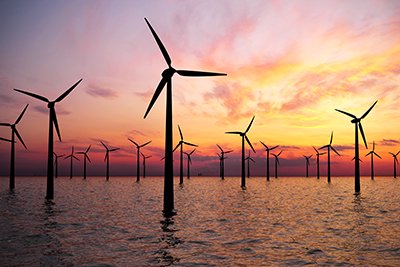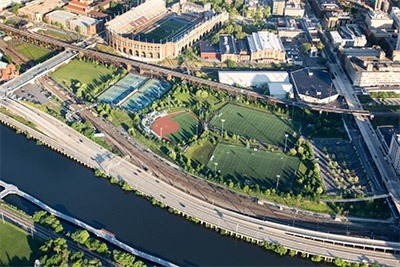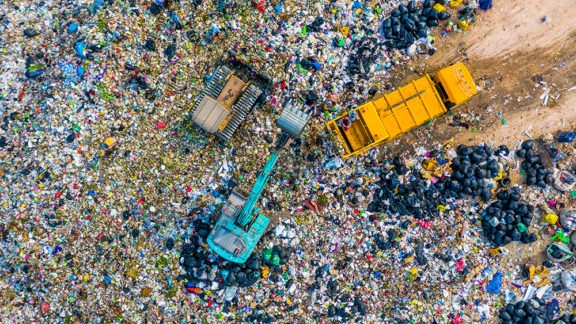Eastern seaboard state governments, power utility companies, and European offshore wind developers are grappling with the complexities of large-scale plans for generating and delivering electricity from wind along the East Coast. Planned eastern seaboard offshore wind farms are in congested, premium, and environmentally sensitive areas. In part, this is a good thing – the resource is close to the demand. But on the other hand, this requires siting and development approaches that minimize or eliminate adverse impacts on real estate, tourism, fishing, and wildlife as well as their habitats. Sensitive planning and innovative technologies can help ensure that construction approvals are expedited and that the natural and economic advantages of these areas are sustained for decades to come.
In this post, we explore key considerations and complexities for East Coast wind energy projects. This is the first in our series of posts focused on wind energy where our subject matter experts explore more deeply how to address these considerations.
How do we know where to locate assembly and staging facilities?
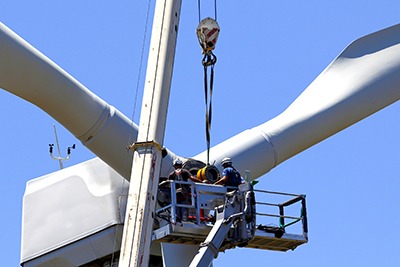
The siting of manufacturing, assembly, and transport facilities is a critically important factor in delivering energy from offshore wind. You’ll need to consider the proximity to port and rail infrastructure for the safe and economical delivery of critical components, available labor force, and power infrastructure for manufacturing. In the nearer term, you’ll want access to port facilities that can handle ships large enough to transport the largest components that cannot be assembled at sea (such as turbine blades).
Looking farther ahead, you should also consider railway connections to port in anticipation of the U.S. developing a national manufacturing supply chain. Both port and rail facilities will require geotechnical and environmental investigations early in the siting process to ensure sites can be developed and allow engineers to develop designs that address the specific site conditions. These studies will be essential to obtain the local, state, and federal permits and approvals required for construction.
What equipment do we need to build offshore wind farms?
There is no easy answer (yet) for the optimal U.S. offshore wind support structures. The foundation type, be it a monopile, a gravity base structure, or a jacket structure founded on driven piles or suction buckets, is largely dictated by the ground conditions. However, the financially optimal solution, at least for the next several years, is predicated on the availability of expensive European installation vessels. Due to Jones Act restrictions, these foreign vessels cannot transfer components from a U.S. port to the wind development area, requiring instead expensive supply barges to ferry components such as foundations and turbines to site, adding cost and safety risk to a project. We expect to see construction of new-build U.S.-registered installation vessels. That will ultimately reduce the cost for offshore wind and allow technically optimal solutions with less risk.
Ok, there are ways to construct the equipment. But how then do wind turbines export cables get to shore?
Ironically, one of most challenging aspects for offshore wind is the seabed. In addition to foundations, you’ll face the challenge of how to route export cables from the offshore wind farm to shore. Designers must consider potential fishing grounds and anchorages, environmentally sensitive seabed areas, the seafloor geology, unexploded ordnance and archeological artifacts, and the landfall location. The latter is especially complex because the mid-Atlantic and New England shorelines are either well-developed for tourism or are environmentally sensitive lands.
Given these challenges, the best solution for landfall may often be horizontal directional drilling (HDD) to install the land-falling export cable under the beach to a connection point on land. You will want a partner with a deep understanding of the coastal geology and soil conditions to construct this landfall safely.
Now that the energy has made it to shore, how will wind energy be tied into the electrical grid?
Getting the export cable on land is only one part of the energy delivery puzzle. Next, you will need to connect that cable to the existing energy transmission grid. It’s critical to have good knowledge of the existing transmission system and substations, a thorough routing analysis, and the ability to obtain the local, state, and federal permits required along the selected route. In many cases, given the environmental and social sensitivity of these areas, HDDs may be conducted at numerous locations to minimize the impacts and the time-consuming task of obtaining permits and approvals
So it’s possible to make offshore wind energy a technical reality. But what about potential community opposition?
Communities benefit from a clear articulation of the positive contribution it makes nationally and locally. The U.S. has a vast offshore wind energy resource. Our shores possess a power potential of more than 4,000 gigawatts, over four times the generating capacity of the current U.S. electrical system. Offshore wind energy holds the promise of significant environmental and economic benefits for the U.S. It is an abundant, low-carbon, domestic energy resource. It is located close to major coastal load centers, providing an alternative to long-distance transmission or development of electricity generation in these land-constrained regions.
Once built, offshore wind farms could produce energy at low, long-term fixed costs, which can reduce electricity prices and improve energy security by providing a hedge against fossil fuel price volatility. The benefits go even further:
- Greenhouse gas emissions reductions: Offshore wind energy is expected to significantly reduce greenhouse gas emissions from energy generation in the Northeast. In New York alone, the reduction of greenhouse gas is estimated at more than five million short tons – the equivalent of removing nearly one million cars from the road by 2030. This emissions-reduction benefit would amount to approximately $1.9 billion based on the Social Cost of Carbon originally published by the U.S. Environmental Protection Agency in 2013. NYSERDA’s Offshore Wind Policy Options Paper estimates that this emissions-reduction benefit alone would approximately equal the cost of procuring offshore wind energy, even before accounting for the wider economic development and health benefits.
- Healthier air: Respiratory disease, cardiovascular disease, and premature death are linked to carbon-based energy generation emissions of nitrogen oxides, sulfur dioxide, and fine particulate matter. By switching to clean and renewable offshore wind energy, these emissions would be greatly reduced. This directly translates into better health, better air quality, and reduced health costs.
- Jobs and economic benefits: Developing and deploying offshore wind energy will require workforce development to accommodate the new local jobs in manufacturing, installation, operation, and maintenance of assembly, port, and offshore wind facilities. Over 25% of these jobs are expected to be long-term careers in operations and maintenance as the average life span of an offshore wind farm is at least 25 years.
How Haley & Aldrich can help
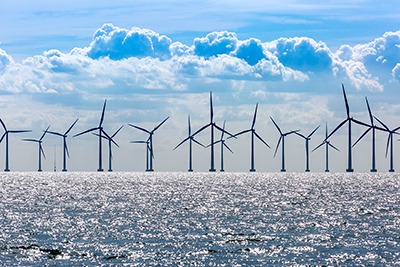
As part of your team, you need scientists and engineers with global experience in offshore wind farm development and operations who also understand the local natural, regulatory, and social environment. Haley & Aldrich, a U.S.-based firm with over 60 years of environmental and geotechnical experience in the northeastern U.S., has teamed with the Norwegian Geotechnical Institute (NGI), a proven leader with 50 years of experience addressing offshore geotechnical challenges and a leader in supporting development of the now mature European offshore wind energy system.
While offshore wind is a new idea in North America, there are many lessons learned from Europe that can help projects succeed here. Together, Haley & Aldrich and NGI provide a team that can deliver onshore and offshore geotechnical investigation and design, HDD design and construction management, natural resources studies, and state/federal environmental permitting that will be required for your project. Visit our web page to learn more about our offshore wind services.
Special thanks to NGI’s Zack Westgate for his insights that were essential for this blog post. Stay tuned for additional blog posts on soil structure and offshore turbine foundations, cable landfall considerations, and ports and harbor infrastructure.
Read more blog posts on offshore wind construction and engineering:
Published: 7/29/2020
- Energy
- Renewable energy
- Trenchless technology
- EHS compliance
- Natural resources
- Sustainability
- Geotechnical engineering
Author

Technical Expert
